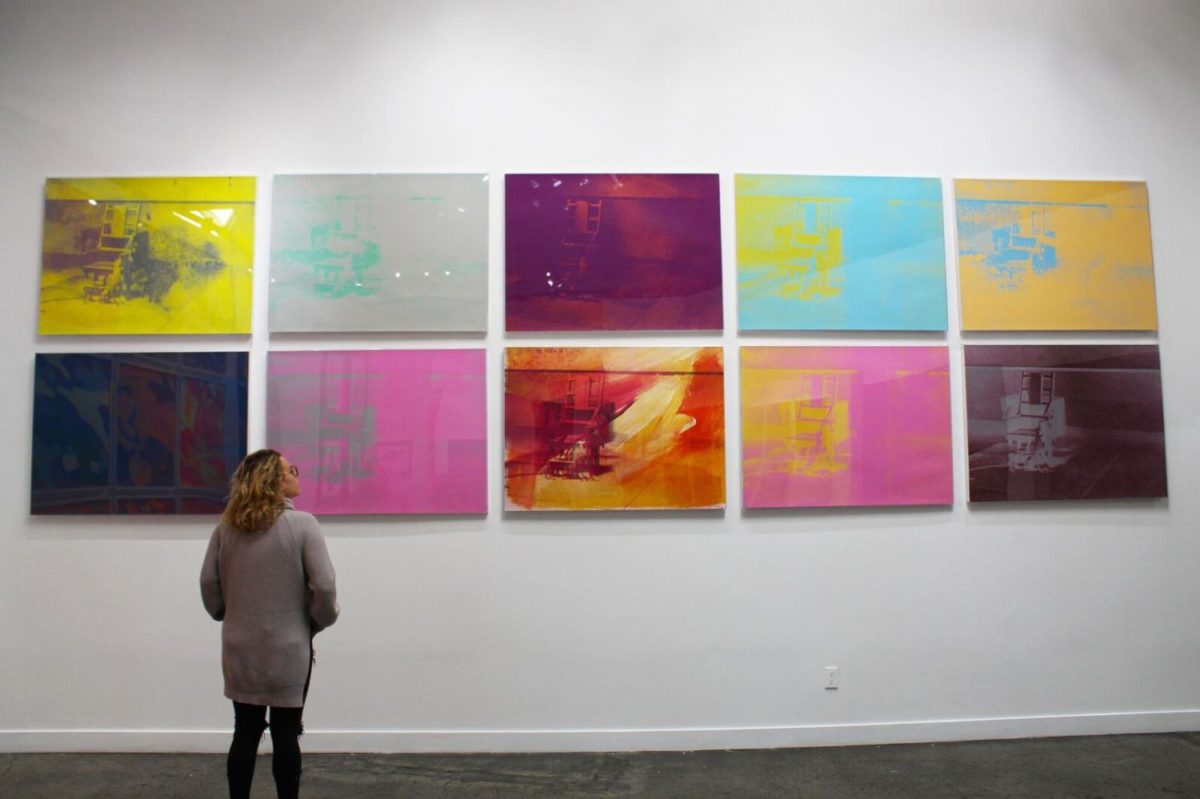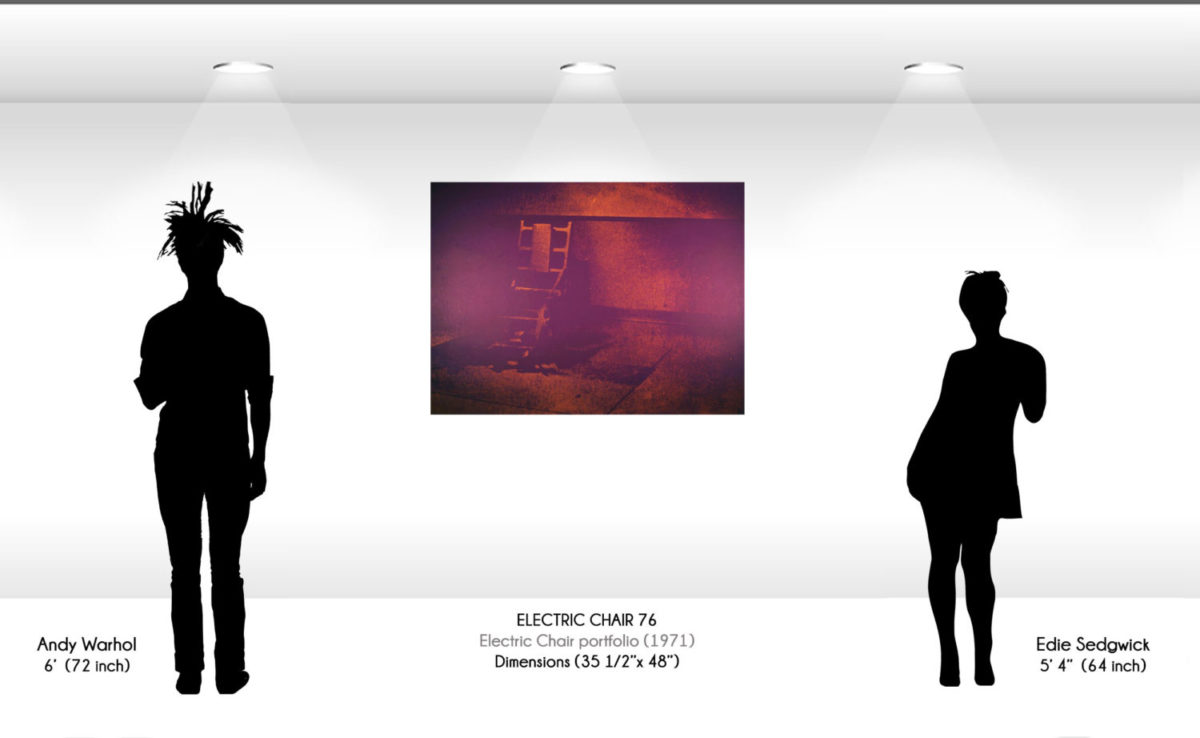Electric Chair 76 by Andy Warhol is one of eleven prints from his 1970 Electric Chair series. Warhol appropriated the original image from a press photograph of the death chamber at Sing Sing Prison in New York. This electrifying work is a resurrection of his 1964-1965 work involving the same subject, which is included in his Death and Disaster collection. The 1960s saw many protests against the death penalty. The electric chair at Sing Sing prison was used for the last time in 1963, and became outlawed two years later. Warhol’s complete 1970 Electric Chairs suite ranks amongst his top 10 highest-selling portfolios of all time.
Andy Warhol’s Death and Disaster series remains perhaps the most controversial group of images in his canon. The collection includes works like Race Riot, Silver Car Crash (Double Disaster), and other morbid impressions. Early criticisms of Pop Art were directed at the genre’s consumerist subject matter; detractors argued that products and celebrities were not objects of artistic significance. But with works such as Electric Chair 76, Warhol’s subject matter saw a very different kind of backlash. The idea of presenting something as dark and upsetting as instruments and scenes of mortality was blasphemous to many. But, society’s obsession with death and violence fascinated Warhol. He wouldn’t let the sensibilities of critics dissuade him from expressing his uniquely bold social commentary.
Electric Chair 76 is a fitting addition to the Death collection. One of the things that fascinated Warhol most about death and tragedy was society’s level of desensitization to it. “[A]nd every time you turned on the radio they said something like, ‘4 million are going to die’. That started it. But when you see a gruesome picture over and over again, it doesn’t really have any effect” (Art News, 1963).
The constant barrage of images and news of death in the media desensitizes a person until images of reality that shock and offend no longer stir real emotion. Warhol’s reputation for painting mass-produced standbys in consumer life—such as Campbell’s Soup cans and iconic celebrity portraits like Marilyn Monroe—gives him the perfect opportunity to riff on this notion. If Warhol’s artistic approach reflects the ubiquitous, the reduplicated, and the widely-syndicated, then his portrayal of death and disaster is an indictment of our relationship with violence.
The Electric Chair prints garnered a special controversy for depicting the subject of intense social debates. In the 1960s, a social push against capital punishment spread across the country, renewing fierce conversations about the role of execution in justice system. The print makes no obvious judgment on the ethics of the death penalty. The stark image of the chair simply confronts the viewer with an instrument of mechanized death. Though repetition may reduce the brutality of an image, Warhol’s decontextualization allows meaning to resurface. In relocating the morbid yet all-too-familiar idea of the chair, he forces audiences to recognize–and contend with–their own passivity. Thus, the image is both challenging and isolating–silent, brooding, and bold.
Ultimately, Electric Chair 76 accomplishes all of this while using Warhol’s bright color palette. Yet, the faded lines around the object allow it to retain an air of subtlety, making the chair itself appear “drowned out” against the bright hues. Additionally, the use of reds, pinks, and purples are characteristically eye-catching, and suggest a liveliness and passion of which the subject is void. The lack of intense contrasts creates a disorientating effect, possibly reflecting the absurd nature of our desensitization. Electric Chair 76 is thus an utterly fascinating piece of Warhol’s canon, and a prized possession for all collectors.















